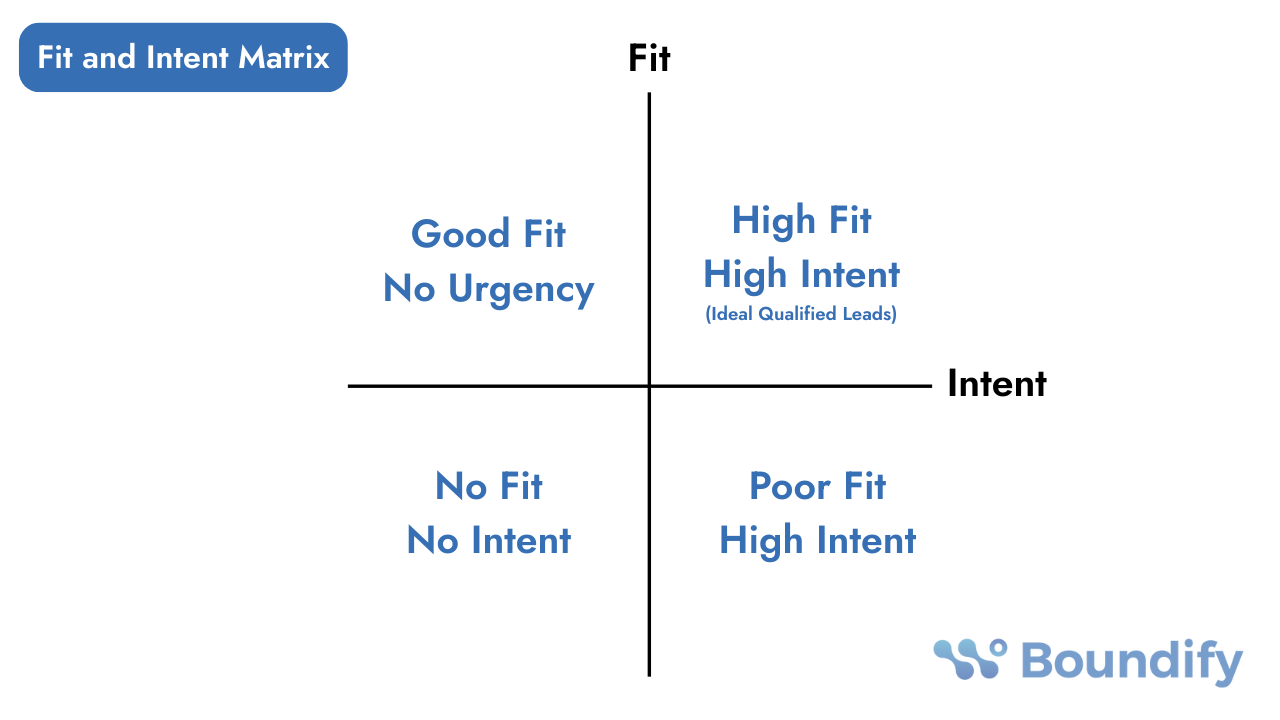Prospecting vs. Qualification in Lead Management
In this episode of Demand Gen Studio, we explored the complexities of lead management and the distinctions between prospecting and qualification. We covered both inbound and outbound marketing strategies, the roles of marketing and sales teams, and the significance of having a unified definition of leads.
The discussion highlights the necessity for team alignment, effective success measurement, and strategies to enhance both efficiency and effectiveness in lead management processes.
Watch on Spotify
Watch on YouTube
Introduction to Lead Management
Lead management is the process of capturing, tracking, and nurturing potential customers as they move through the buying journey, all the way from first contact to becoming a qualified sales opportunity. It's about ensuring the right leads get the right attention at the right time.
It consists of both prospecting and qualification. These two parts of the process require distinct strategies, separate teams, and often their own sets of KPIs and systems. Companies are beginning to blend both inbound and outbound efforts, which used to be treated as completely separate.
With inbound channels becoming more saturated and often bringing in lower-quality leads, and outbound prospecting now easier and more cost-effective thanks to better technology, there's a lot of confusion around how to approach lead management.
That's why we think it's so important for decision-makers to clearly understand how to measure and manage the different stages, knowing when you're qualifying inbound leads versus when you're actively prospecting the right accounts.
Understanding Lead Qualification vs. Prospecting
Lead qualification and prospecting often get confused with one another, but they are two very distinct processes. Qualification is about evaluating whether a lead has both intent (urgency, need, and budget) and fit (the right type of company for your solution). The BANT framework—budget, authority, need, and timing—is a classic method to assess whether a lead is sales-ready.
You can picture leads on the quadrant framework below, where intent is on one axis and fit is on the other. Consider four types of leads: those with both intent and fit (ideal qualified leads), those with intent but poor fit, those with fit but no urgency, and those with neither.

Prospecting typically starts with leads that are a good fit but lack clear intent, meaning outbound efforts target people who match your ideal customer profile but haven't yet expressed interest. In contrast, inbound leads often show intent but must be qualified to determine if they're a good fit.
This distinction helps explain why marketing usually leads qualification while sales owns prospecting, and why a clear framework is necessary to align both efforts.
The Role of Marketing and Sales Teams
It is important to note that this process requires a healthy relationship between marketing and sales teams, particularly in the context of lead generation and qualification. Marketing typically drives inbound efforts—crafting messages and managing campaigns to attract potential leads—but those leads may not always be the right fit or ready to buy.
Because of this, marketing is often responsible for the initial qualification stage, producing marketing-qualified leads (MQLs). However, sales teams often reassess these leads, determining which ones truly meet sales-qualified lead (SQL) criteria.
The distinction between inbound and outbound efforts, and who handles each, can cause friction if both teams are not adhering to shared definitions of what a lead is, are aligned on what KPIs matter to them, and overall work in close collaboration.
Inbound vs. Outbound Efforts
Let's take some time to touch on the distinction and overlap between inbound and outbound efforts. Inbound leads typically come through organic channels like websites, referrals, or marketing campaigns, where a marketing team member qualifies the inquiry before passing it to sales.
Outbound, on the other hand, has traditionally been sales-driven—sales reps proactively identify target accounts, gather contact data using tools like Apollo or Clearbit, and initiate outreach via emails or calls.
Historically, these two functions used separate systems and channels, but digital transformation has blurred those lines. Now, both marketing and sales operate in shared spaces like CRMs, targeting the same contacts through similar digital tools.
This convergence requires new ways of tracking efforts—such as using distinct objects like "leads" in CRM platforms—to distinguish between inbound qualification and outbound prospecting, ensuring clarity in performance measurement and ownership.
Measuring Success in Lead Management
Measuring success in lead management requires distinct metrics for inbound and outbound efforts, while also focusing on a shared end goal: creating qualified opportunities.
For inbound, key metrics include volume, cost per lead, lead quality, and time to qualification, highlighting how effectively marketing attracted the right audience.
Outbound, however, focuses on effort-based metrics: the number of touches, response rates, meetings booked, and how many of those turn into business opportunities.
The two approaches differ in execution but converge at the point of generating a qualified pipeline. By tracking both separately yet cohesively, companies can pinpoint where to optimize, scale, or support teams, ultimately aiming for a balance that drives growth through both demand capture and demand creation.
Improving Efficiency and Effectiveness
Improving lead management efficiency and effectiveness requires balancing short-term results and long-term brand building. Many companies focus heavily on efficiency—finding the cheapest ways to reach large audiences or contacts—but true effectiveness depends on improving audience quality and intent.
For inbound efforts, effectiveness increases when marketing narrows its audience to better-fit prospects and crafts content that resonates, leading to higher-quality inquiries.
For outbound or prospecting efforts, it's crucial to identify better signals of intent, such as website visits or event participation, to target outreach more precisely. While optimizing only for immediate wins is tempting, successful organizations also invest in reaching future buyers, understanding that today's non-buyers may become tomorrow's opportunities.
Ultimately, a smart approach puts roughly 50% of effort into driving current results and 50% into building future pipeline and brand awareness.
Interested in learning more? Check out the rest of the episodes of Demand Gen Studio. We discuss marketing and demand generation topics, with inspiring interviews with thought leaders. See you next time!
You May Also Like
These Related Stories

Building An Infrastructure for Growth with Harmony Anderson

The Role of Gifting in Demand Generation with Kris Rudeegraap

